Canoeing to work: Floods bring chaos, renewal to Snoqualmie Valley
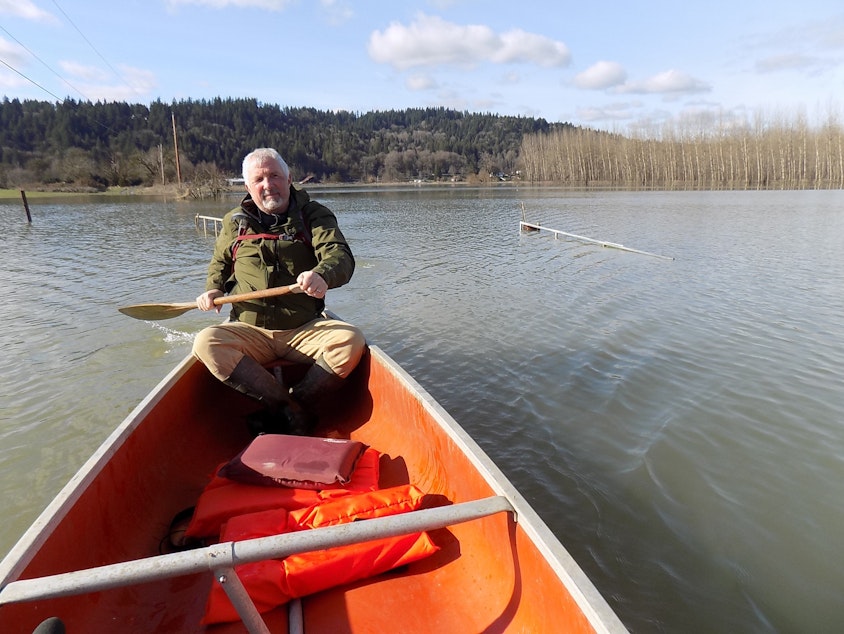
It’s a sunny winter day in the Snoqualmie Valley, and Jim Haack is commuting to work.
In his canoe.
The road to his cattle farm is flooded. So is his farm.
Haack says whenever the Snoqualmie River has a big flood, he has to paddle out to his cows in either a kayak or canoe, depending how much stuff he needs to haul.
“It varies from year to year,” Haack said. “This year's been tough because of the frequency of these larger events.”
The Snoqualmie Valley typically gets about one major flood each winter, according to the Snoqualmie Valley Preservation Association.
So far this winter, there have been five major floods.
“Past two weeks, we've had two major floods, one right on the back of the other,” he said. “We were able to drive the road for a few hours in the middle of last week.”
Sponsored
Floods have hit eastern King County hard this winter. For farmers in the Snoqualmie River Valley, the floods are a two-edged sword, bringing destruction and renewal.
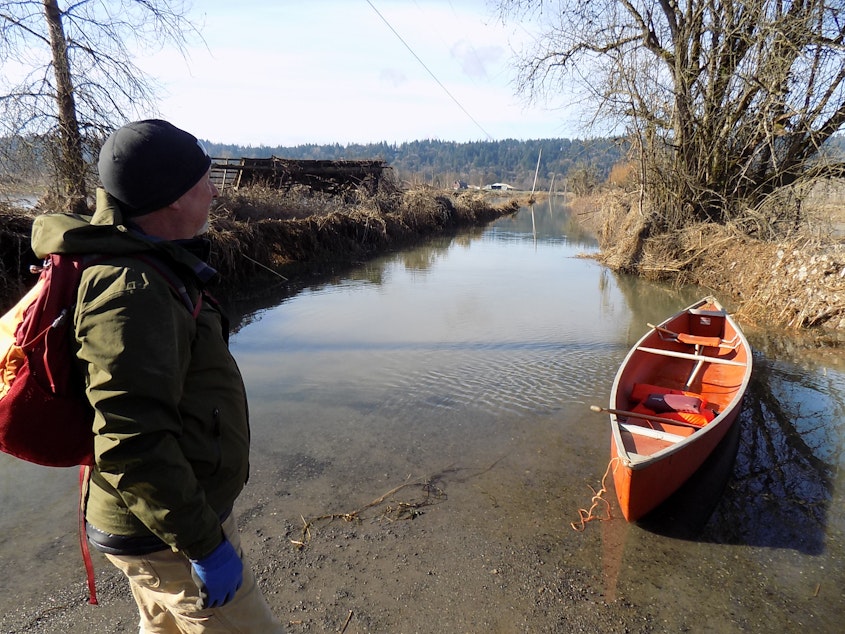
After a few minutes paddling directly above Northeast 138th Street, Haack floats through the gate to his farm, Wild Canary Farm. Only the top of the gate sticks above the floodwaters.
“We're on our farm now,” the small-scale cattle farmer said from the stern of his canoe. “We just came through the gate, over the gate.”
“This is all pasture,” Haack said from the middle of what appears to be a placid lake. “The floods are a pain in the butt.”
Sponsored
Winter floods are a fact of life in this lush valley about 15 miles east of Seattle and just a few miles east of the high-tech suburb of Redmond.
Big floods can mean catastrophe for homes or businesses built on a flood plain like this. Haack says some Snoqualmie Valley farms suffered big losses this flood season, as fall crops were ruined or fences and land scoured away.
But this isn’t a story of a natural disaster wrecking a business or a whole community. It’s a story of a family farm adapting to the inevitable.
After landing his canoe in the middle of his 60-acre farm, Haack leaves deep footprints in freshly deposited silt as he walks toward the main barn where he and his wife raise 25 beef cows.
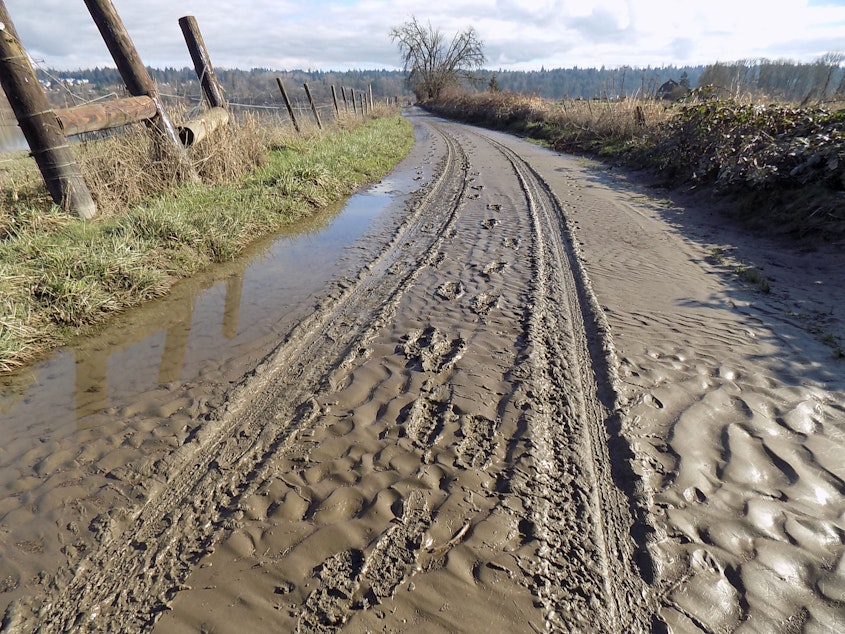
Sponsored
The cows are munching on hay in the open-sided barn where they spend most of the winter.
“In the wintertime, we'll let the animals out, weather permitting, and just let them roam around just to get out of the barn,” Katie Haack said. “But it's been hard this year because we've had so many floods.”
She's avoided her husband's wet and wobbly commute by simply staying at the farm, cut off from the rest of the world by flood water, for two weeks straight.
The latest flood reached the pen where they keep the bulls, so they had to move the bulls.
“First time we’ve had to do that,” she said.
Sponsored
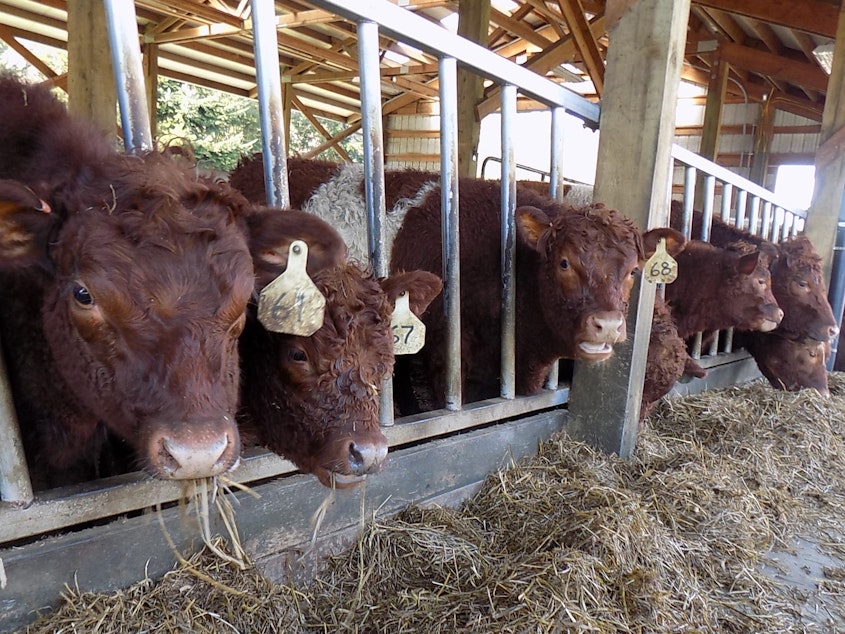
The Haacks have adopted various strategies to absorb the punch of the floods. Each autumn, they move all farm equipment to higher ground. They check flood forecasts every day in the winter.
And since their chunk of the flat valley floor didn’t have higher ground, they created some.
“We built an island and that's where the herd stays,” Jim Haack said.
Their “island” – also known as a flood refuge pad – is a dirt mound about 10 feet tall and a little bigger than a basketball court. The cows and the farm’s main buildings sit up there, safe from all but the most extreme floods.
Sponsored
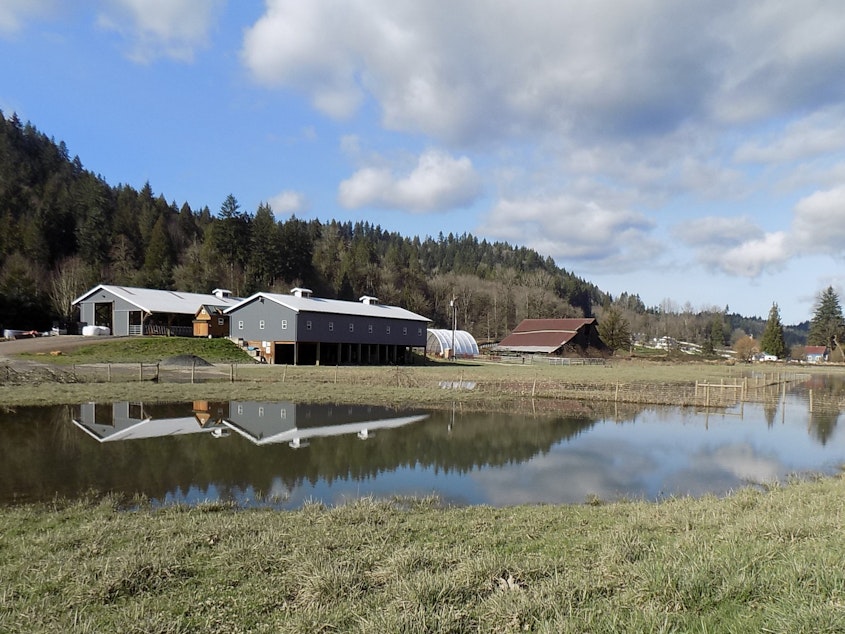
“In the absence of this, what we're doing, it would not be possible,” Haack added.
King County offers farmers technical assistance in planning these flood-refuge pads. The county also encourages keeping them as small as possible, since each pad diminishes the area of flood plain left to store and absorb floodwaters, potentially worsening flooding elsewhere in the valley.
Farmers go to all the extra effort of farming in a flood plain for good reason.
“Anything that's grown here tastes amazing. Part of why farming a flood plain is a good idea is how incredible the soil is,” Cynthia Krass with the Snoqualmie Valley Preservation Association said.
Floods aren’t just water. On parts of the Haacks’ farm that are no longer underwater, the ground is coated with a couple inches of freshly deposited silt: new soil.
“This is all new,” Haack said while stepping through the fine mud. “It's like putting down fresh compost or putting down fertilizer.”
A climate refuge
The valley’s recent trend toward more intense flooding is likely to continue with climate change. The long-term outlook is for more of the heavy storms known as atmospheric rivers and less snow in the Cascades.
“That combination is a recipe for more frequent higher-magnitude flooding, which is not good news for people on flood plains,” University of Washington geomorphologist David Montgomery said. “But one of the things about farming is it's more resilient than condominiums or human dwellings. And so one of the things I think, policy-wise, we need to do in this region is figure out ways to help farmers adapt to that coming reality.”
Farm advocates say repairing poorly maintained culverts and drainage ditches along the Snoqualmie could help tame floods by letting them drain more quickly. They say those measures could help the valley’s threatened salmon as well.
There’s also tension as well as longstanding negotiations between competing users of the flood plain: The Snoqualmie Tribe and other salmon advocates want farms to leave bigger buffers of native vegetation around streams, for example.
Montgomery said it’s no accident that many of the longest-lasting civilizations in human history were centered on flood plains. Their recurring floods kept pumping new life into the soil and the civilizations that depended on it.
Haack says keeping agriculture healthy in the Snoqualmie Valley is important as other regions get too hot or dry to remain major food producers.
“We're going be a climate refuge in the years to come,” he said. “This farmland will become more and more important.”
You might not expect a cattle farmer to bring up the civilization-shaking threat of climate change, since cows play a large part in it.

Methane from cattle belches alone did about 4 percent of all the climate damage done in the United States in 2016, according to the Environmental Protection Agency. Even without considering any of the energy or fertilizer used to produce cattle feed, the potent greenhouse gas makes beef a climate menace.
It’s the worst food for the climate, according to researcher Hannah Ritchie of Our World in Data and the University of Oxford: Eating a pound of beef results in the equivalent of 21 to 60 pounds of carbon dioxide emissions, mostly due to belched methane.
Haack says that’s probably true for industrial-scale cattle farms, but not for his small herd grazing lush Snoqualmie valley grasses under a strict rotational grazing system. The rotational grazing stimulates grasses to put on growth underground, helping suck carbon out of the sky and stash it in the soil, where it doesn’t harm the climate.
“We sequester a lot of carbon out here,” he said.
Montgomery says that rotational grazing can regenerate depleted soil and that cows with diverse diets can produce less methane.
“If you have lifelong grass-fed or prairie-grazed beef that is being managed on a regenerative ranch where you're stashing carbon back in the ground, then the climate impact is far less,” Montgomery said.
Still, scientists with the Intergovernmental Panel on Climate Change say grass-fed cows belch more methane than grain-fed cows.
“For those of us who would want to eat meat in the future, we should be thinking about eating less of it, that's grown in a more regenerative style,” Montgomery said.
Researchers are experimenting with methane-lowering diets for cows, so that modest amounts of beef and dairy might some day be part of a climate-friendly diet for humans.




